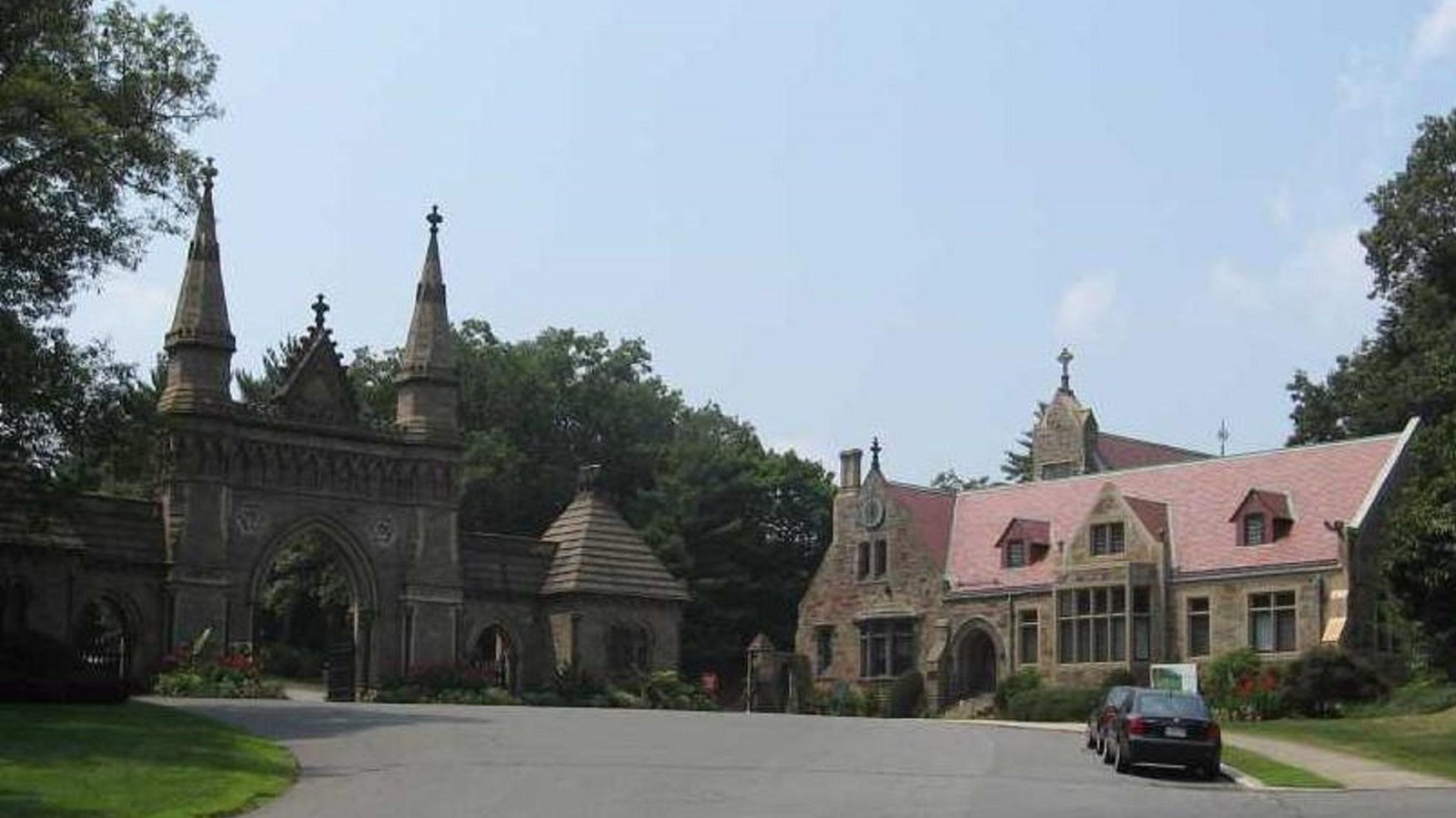Last updated: July 7, 2020
Place
Forest Hills Cemetery

Photo by MarkinBoston, Public Domain, https://commons.wikimedia.org/w/index.php?curid=17979972
The historic Forest Hills Cemetery in the Jamaica Plain neighborhood of Boston is a fine example of a 19th century rural, or “garden” cemetery, listed in the National Register of Historic Places. Like Mount Auburn Cemetery, Forest Hills integrates romantic and picturesque landscape design ideals with memorial architecture and monuments. Established in 1848, Forest Hills Cemetery was initially a municipal cemetery for the community of Roxbury, Massachusetts. The cemetery is adjacent to Franklin Park, part of the Olmsted Emerald Necklace park system.
Henry A.S. Dearborn (1783-1851) spearheaded the project to develop Forest Hills Cemetery as a rural cemetery. While he was president of the Massachusetts Horticultural Society, Dearborn designed the Mount Auburn Cemetery landscape. By 1847, he was mayor of Roxbury, an office he held until his death in 1851. As Roxbury experienced urban pressures in the years leading up to the cemetery’s creation, Dearborn persuaded local leaders to provide political support for a new rural cemetery. Unlike Mount Auburn and many other rural cemeteries, Forest Hills was a municipal initiative. The cemetery was open to members of every religion, social class, or ethnic group. Lots were set aside for paupers as well as those who could afford to pay.
The site chosen for the new cemetery was a plot of farmland with natural attributes: a varied terrain, several ponds, and a mixture of open fields and dense woodland that made it ideal for development as a rural cemetery. The hills provided scenic views of Boston to the north, and The Blue Hills to the south. Dearborn worked with Superintendent Daniel Brims in laying out the cemetery. The resulting curved roads and naturalistic plantings were characteristic of rural cemetery design. By 1860, they established a nursery on site that allowed for the cultivation of both native and exotic plant species for the cemetery. A highlight of the completed cemetery was the four-acre Lake Hibiscus near the center of the cemetery, completed in 1861. Another interesting feature at Forest Hills was the use of local puddingstone in many of the dry laid stone retaining walls located in the older sections of the cemetery. A municipal cemetery for seven years, Forest Hills became a private nonprofit institution when the City of Boston annexed Roxbury in 1868.
Today, Forest Hills Cemetery encompasses 250 acres. The cemetery is known for its unusual collection of large specimen trees, some of which the Arnold Arboretum introduced to the United States. In addition to its horticultural collections, Forest Hills has an outstanding collection of art and architecture. In 1991, the Forest Hills Educational Trust was created. The Trust sponsors art exhibits, lectures, concerts, interpretive tours and other events, including a popular annual lantern festival. Forest Hills today includes a wide variety of vegetation types, ranging from natural woodland to formal Victorian flowerbeds. Of the many original small ponds on the property, only Lake Hibiscus remains.
Many famous people lie buried at Forest Hills, including statesmen, soldiers, industrialists, social reformers, artists, and poets. The unusually democratic approach to interment ensured that people from all parts of society would lie in rest there together. Some of the interred who had ties with conservation and landscape architecture include Henry A.S. Dearborn; the Olmsted Brothers; and Alexander Agassiz, a zoologist at Harvard University.
Forest Hills Cemetery is located at 95 Forest Hills Ave., in Boston, MA. The cemetery grounds are open to the publicFor additional information about the Cemetery, visit the Forest Hills Cemetery website or the Forest Hills Educational Trust website. The Trust was founded to preserve and interpret Forest Hills Cemetery and its website includes a calendar of events, a description of the site, information on exhibitions and sculpture, contact information, directions, and a calendar of events.
To discover more Massachusetts history and culture, visit the Massachusetts Conservation Travel Itinerary website.
